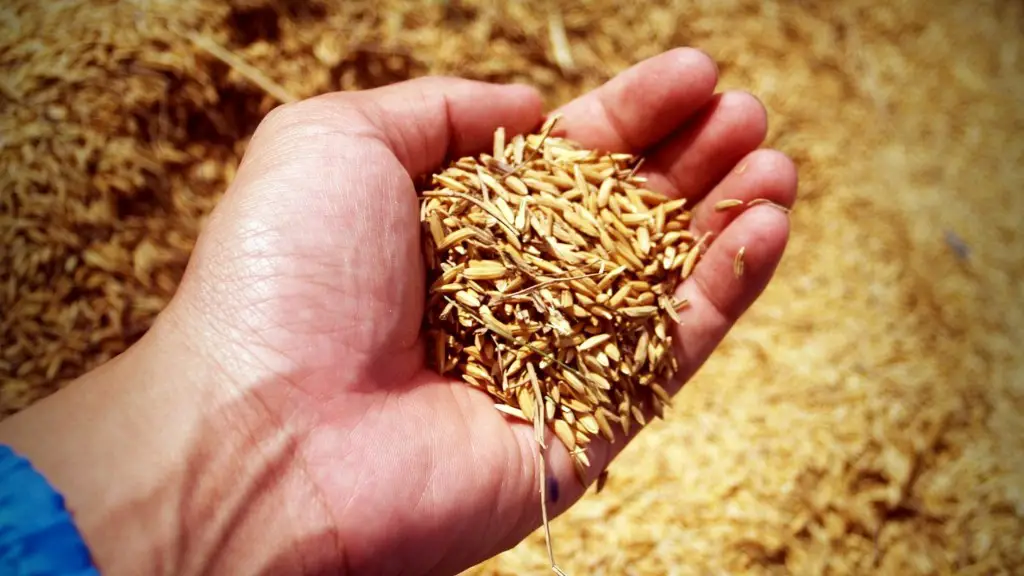Climate change is a pressing issue that has a serious and unavoidable impact on agricultural production. As such, it is necessary to develop strategies that help to mitigate and adapt to the risks of climate change. To address climate change in agriculture, it is important to understand its effects on the various agricultural systems and their resources, such as land, water, and crops. Then, it is important to assess and evaluate the possible solutions and develop an action plan to implement them. Here are some possible solutions to begin to manage the effects of climate change in agriculture.
One approach to addressing climate change in agriculture is to focus on increasing the efficiency of current agricultural production systems. This can be done by increasing crop yields and improving water use efficiency, through conservation agriculture and improved irrigation techniques. Additionally, the use of new technologies such as precision agriculture can help to maximize the productive potential of agricultural land and reduce the impacts of climate change on agricultural systems.
Another important aspect of addressing climate change in agriculture is to integrate traditional knowledge and practices into the agricultural production systems. This includes taking into account local context, including the ecosystems and climate, when selecting crops and managing agricultural systems. Additionally, traditional crop management practices such as agroforestry and rotational grazing can help to improve the efficiency of agricultural production and to reduce the impact of climate change.
Another option for reducing the negative impacts of climate change in agriculture is to focus on developing sustainable agricultural solutions. This includes the use of organic farming techniques, the development of better nutrient management practices, and the use of renewable energy sources. Additionally, the development of sustainable supply chains and marketing strategies can help to reduce losses and maximize the efficiency of agricultural production.
Finally, climate change adaptation in agriculture should focus on the development of markets and supporting infrastructure. This includes developing programs that facilitate the access to financing for agricultural production, as well as the development of agricultural insurance schemes. Additionally, the development of crop varieties that are adapted to climate change, as well as the use of weather-based technologies and agro-meteorological data, can help to improve agricultural production in the face of climate change.
Measure of Climate Change Impacts in Agriculture
To properly manage the effects of climate change on agriculture, it is important to understand the impacts of climate change on agricultural systems. This can be done through research and the development of models that are based on agro-climatic data and scenarios for future climate conditions. Additionally, monitoring of agricultural systems over time can help to determine the impacts of climate change on productivity, water use, and soil fertility. This data can then be used to guide strategies to mitigate and adapt to climate change impacts in agriculture.
In order to effectively measure the effects of climate change on agricultural systems, it is necessary to characterize the various climatic factors that affect these systems. This includes determining the climate’s potential impact on the growth, productivity, water use, and soil fertility of crops and livestock. Additionally, the impacts of climate change on water availability and resource use need to be taken into account, as this will affect crop and livestock production.
Once the climate impacts on agricultural systems have been measured, it is then necessary to identify the risks of climate change on agricultural systems and develop strategies to reduce or mitigate these risks. This can include the use of crops or livestock that are more resistant to climate-related stressors, or the use of drought-resistant crop varieties. Additionally, the development of climate-resilient agricultural practices, such as conservation agriculture and integrated pest management, can help to reduce the risk of climate change on agricultural systems in the future.
Finally, the development of policies and programs at the national, regional, and international levels to support adaptation and mitigation of climate change in agriculture is necessary. This includes the development of climate-smart agricultural policies and the implementation of market-based instruments and other incentives that can help to facilitate the adoption of climate-smart agricultural practices.
Evaluate the Adaptation Strategies to Climate Change in Agriculture
Once the strategies, policies, and measures to address climate change impacts in agriculture have been developed, it is then important to evaluate the effectiveness of these measures and implement the appropriate strategies. This can include the use of climate models to evaluate the potential future impacts of climate change on agriculture, as well as the use of economic, social, and ecological modelling to assess the potential benefits and costs. Additionally, the evaluation of adaptation strategies should take into account the environmental, social, and economic impacts of the strategies in order to ensure that any adaptations made are beneficial.
It is also important to develop an effective monitoring and evaluation system to ensure that the strategies adopted are effective and that the benefits are being realized. This should include a comprehensive system that includes data collection and analysis, as well as the development of indicators of success. Additionally, the monitoring and evaluation system should be embedded into the entire process of adaptation, from the initial assessment of climate risks, to the development and implementation of adaptation strategies.
Finally, it is important to take into account the lessons learned from the evaluation of the effectiveness of various adaptation strategies and policies. This can include the analysis of the successes and failures of various strategies, as well as the factors that enabled or prevented the successful implementation of various strategies. Additionally, the analysis of the long-term impacts of various strategies is important in order to identify and build on strategies that have been successful.
Implementation of Adaptation Strategies to Climate Change in Agriculture
Once the strategies, policies, and measures to address climate change in agriculture have been developed, it is then necessary to ensure that these strategies are implemented effectively. This may involve the development of implementation plans, which should take into account the socio-economic, legal, and cultural contexts, as well as the capacities and capabilities of agricultural producers. Additionally, it is important to ensure that any necessary resources, such as capital, financial instruments, and technical expertise, are available.
It is also important to ensure that the implementation of adaptation strategies is monitored and evaluated. This should include the development of indicators that can help to measure the effectiveness of the various strategies, as well as the identification of any potential problems or barriers in the implementation process. Additionally, the evaluation of the implementation should identify any lessons learned that can be used to improve or refine the strategies or programming in the future.
Finally, it is important to recognize that adaptation strategies to climate change in agriculture cannot be implemented in isolation. Rather, these strategies should be integrated into broader efforts to address climate change, such as the development of disaster risk reduction strategies and climate policies. Additionally, it is important to ensure that adaptation strategies are considered within the context of the broader development processes, such as food security and rural development.
Financial Support for Climate Change Related Adaptation in Agriculture
To ensure the successful implementation of adaptation strategies to climate change in agriculture, it is necessary to secure adequate financial resources. This can include the development of incentives and financial instruments that are tailored to the specific needs of agricultural producers, as well as the provision of grants and subsidies to support their investments in adaptation. Additionally, the development of carbon pricing schemes can provide incentives for the adoption of climate-smart agricultural practices.
It is also important to ensure that agricultural producers have access to the necessary resources to make the necessary investments in adaptation. This includes access to training and technical expertise, as well as to information and decision support tools. Additionally, the development of mechanisms to share the costs and benefits of adaptation investments across different actors is important to ensure the sustainability of adaptation investments.
Finally, it is important to ensure that policies, programs, and financial resources are effectively targeted to those communities that are most vulnerable to climate change impacts. This can include identifying the most vulnerable regions for agricultural production, and targeting adaptation investments to these regions. Additionally, it is important to ensure that adaptation investments are matched with livelihood and other development needs of the most vulnerable communities.




